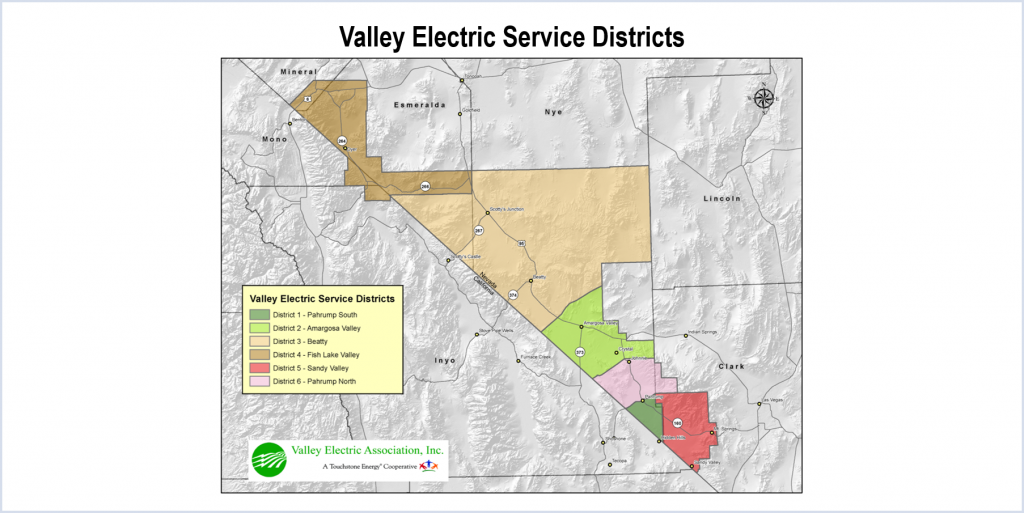By Robert Mullin
CAISO’s Board of Governors last week approved a proposal designed to prevent smaller transmission owners from footing the costs for network upgrades needed to interconnect generation serving load outside of their service territories.
The plan was the product of seven months of work by CAISO staff and stakeholders to address a situation facing Valley Electric Association — one that could also apply to other small utilities that join the ISO in the future. (See CAISO Issues Final Proposal for Small TO Interconnection Costs.)
Valley Electric, a Nevada-based cooperative serving about 18,000 electric customers in a sparsely populated area along the California-Nevada border, has recently been targeted as a promising site for developing solar projects intended to help California achieve its 50% by 2030 renewable portfolio standard.
Avoiding Rate Shock
“This proposal addresses the rate shock that would happen for a small [TO] and would have de minimis impact on larger [TOs],” Stephen Rutty, CAISO’s director of grid assets, told the board during its March 15 meeting.
Rutty pointed out that only a handful of CAISO stakeholders opposed the proposal, which would require the ISO to determine on a case-by-case basis whether a candidate TO could be allowed to fold low-voltage generator interconnection costs into high-voltage transmission revenue requirements, thereby spreading costs among the ISO’s entire ratepayer base. San Diego Gas and Electric demurred, citing a concern that CAISO’s solution did not meet FERC cost allocation rules.
The proposal requires that an eligible TO be very small relative to others (with a gross load of 2 million MWh or less), located in a renewable resource-rich area gaining “elevated” interest for generator procurements and not in need of the new interconnecting generation to meet an RPS.
CAISO has estimated that a single $10 million network upgrade required by new generation would increase Valley Electric’s combined high- and low-voltage transmission access charge (TAC) by nearly 14%.
“However, if they are allowed, under this proposal, to put it into their high-voltage TAC, their increase would be about 0.04%, and the rest of the [participating TOs] would see a very similar de minimis impact,” Rutty said.
150 MW New Generation vs. 130 MW Load
Valley Electric representative Josh Weber, an attorney with Davison Van Cleve, sought to provide some additional context for the board.
“Valley’s peak load, out there in the desert when the air conditioners are all running and it’s 114 degrees outside, is somewhere around 130 MW,” Weber said, adding that the cooperative is currently negotiating about 150 MW worth of generator interconnection agreements. Those deals alone could incur $6 million to $9 million in upgrade costs for the 138-kV lines that would be subject to the proposed rule.
“So that means that the generation that Valley is working hard to interconnect is much, much more than Valley’s entire peak load,” Weber said. “I think that kind of speaks to the magnitude of the cost shift that we’re talking about here.”
Speaking on behalf of the Large-scale Solar Association, California Wind Energy Association and Independent Energy Producers Association, attorney Joe Karp offered his support for the proposal.
“Several options were considered, and this option is a narrowly tailored option that addresses a unique issue,” Karp said. “We believe the solution here is consistent with general FERC and [CAISO] policy on allocating infrastructure and upgrade costs.”
Catherine Hackney, director of state legislative policy for Southern California Edison, provided an additional endorsement, saying her utility appreciated the ISO’s efforts to narrow the proposal to fit Valley Electric’s circumstances.
Cost Allocation Concerns
SoCalEd’s neighbor to the south, however, took a contrary position.
“San Diego Gas and Electric agrees with just about everybody that something needs to be done, but I think the solution here that’s been identified is, frankly, inconsistent with FERC’s policy on cost allocation,” said Jan Strack, SDG&E’s manager of transmission planning.
FERC has been “pretty clear” that costs for transmission projects should follow benefits, Strack said.
“Instead, what we have in this proposal is a one-off kind of allocation mechanism where the size of the entity suddenly takes on great weight,” he said. “Nowhere in FERC’s cost allocation principles do I see any principle that size matters.”
Strack said the ISO still needs to determine the best way to establish a linkage between benefits and costs of transmission projects.
“I think until that exercise has been gone through, it will be very premature to go forward with this one-off, unprincipled approach to allocating transmission costs just on the basis of the size of the entity,” he said.
Strack contended that all electricity users benefit from the reduced carbon emissions and lower prices fostered by new renewable generation.
“Pretty much everybody realizes benefits from these connections, so to divide this up between low- and high- [voltage] — even in the way the ISO is proposing here — is a mistake, and I don’t think it’s going to survive a test at FERC,” Strack said.
“Size was not the only criteria here,” countered Keith Casey, CAISO vice president for market and infrastructure development. “The other piece of that was that [Valley Electric] did not have an RPS [and] did not benefit from renewables connecting to its system.”
Casey agreed that FERC’s principles require costs to follow benefits, but he said that Valley Electric’s lack of benefits from the new generation would provide a “principled” argument to FERC.
He also contended that FERC must in this case consider the issue of “just and reasonable” rates.
“Imposing that cost on a small number of customers when you’re looking at a 14% increase in just one year — we think there’s an issue there around the just and reasonableness of that,” Casey said.





